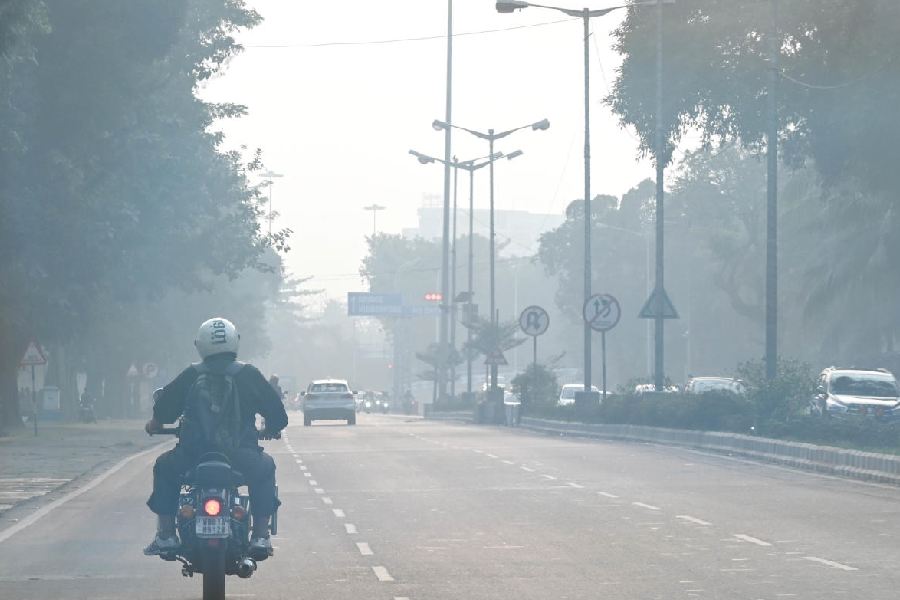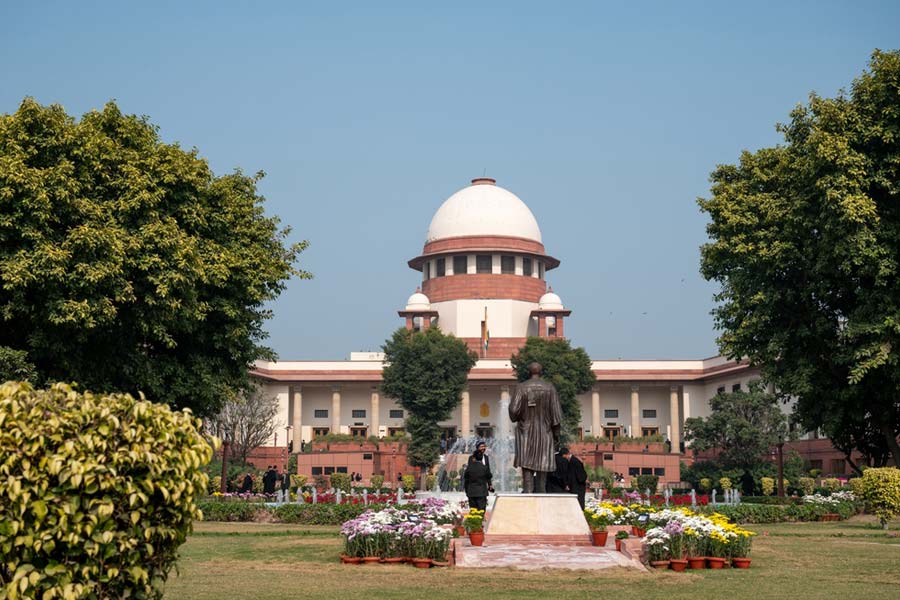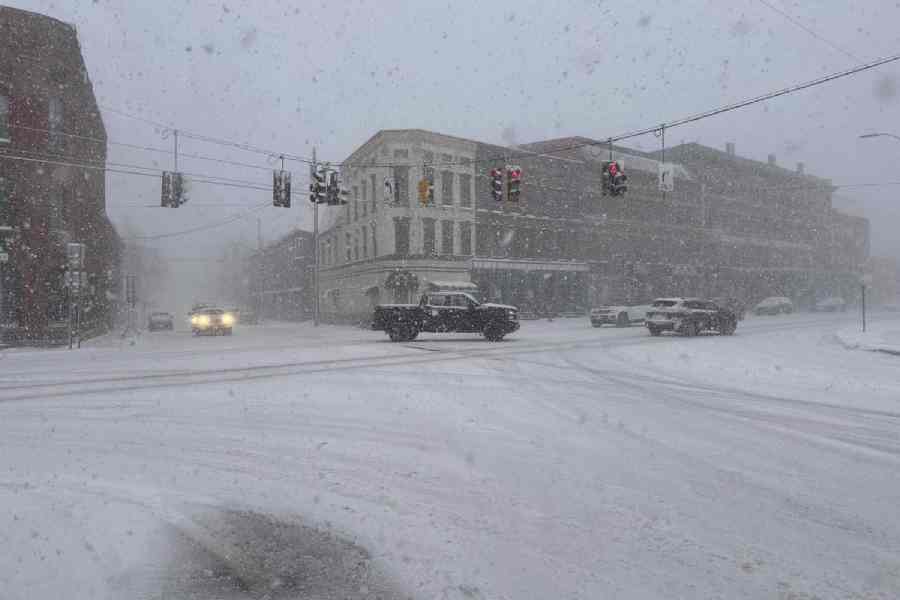The air quality turned “poor” in four out of seven monitoring stations in Calcutta and “very poor” in four out of five stations in Howrah on Saturday as temperatures dipped.
A scientist with the state pollution control board (PCB) said the pollutants floating in the air get trapped and cannot escape with a dip in the mercury. Very low wind speed, common during winter, further traps the pollutants.
At 4pm on Saturday, the air quality at Ballygunge, Bidhannagar, Jadavpur and Fort William was “poor”.
According to the National Air Quality Index, prepared by the Central Pollution Control Board (CPCB), “poor” air quality can lead to “breathing discomfort to most people on prolonged exposure”.
What hurts most is that people love to go out for walks, visit parks and be outdoors during the winter in Calcutta. A drop in air quality, especially on weekends, impacts a lot of people, said scientists.
The air quality in Howrah was worse. At 4pm on Saturday, it was “very poor” at the Botanical Garden, in Dasnagar, Ghusuri and Padmapukur. The National Air
Quality Index says “very poor” air quality can lead to “respiratory illness on prolonged exposure”.
A Calcuttan who passed Howrah bridge on Saturday afternoon said there was a haze all around. Visibility had dropped.
The haze was visible almost across the city, in the Maidan area, on EM Bypass and in other places with open stretches.
The state PBC has prepared a graded response action plan, which says when the air quality drops to “poor” in an area, “water sprinkling to control dust” must be started.
“Enforcement of pollution control regulations in industries and construction sites” is another measure in the plan.
A senior KMC official said the civic body was sprinkling water in three shifts across the city, especially around areas where the air quality is “poor”.
“The sprinkling of water helps control resuspension of road dust, which is a contributing factor to the increase in particulate matter,” said a PCB scientist.
The KMC official said the civic body has started imposing fines on those found burning waste in the open and on construction sites that are not adhering to dust control measures, like keeping sites covered with geotextile fabric, keeping sites moist and putting covers over stacked construction material like sand.
“Our teams are visiting construction sites from where dust is emanating and serving them notices if they are not following the measures.”
The KMC is also using a recalibrated tanker that can simultaneously water many spots, including roads, trees and median dividers.
“We have been successful in keeping moderate air quality in Calcutta on multiple days so far this winter,” said the KMC official.
In Howrah, the measures required to be taken when air quality drops to “very poor” are still on hold, said an official of the Howrah Municipal Corporation (HMC).
According to the graded response action plan, “stopping the use of diesel generators” (except for essential services), “enhanced parking fees to discourage private transport” and “maximising the frequency of public transport services” are suggested when air quality drops to “very poor”.
This is in addition to sprinkling water and monitoring construction sites. “We are sprinkling water on roads, even the narrower interior ones. We are also monitoring construction sites, but the measures are still on hold because this may create unnecessary panic among residents. We will implement them once there is a nod from the state’s top brass,” said the HMC official.
The official said infrastructure work in Salkia, where a water supply project is underway, is leading to a spike in air pollution in the area and this is reflecting in readings at the station in Ghusuri, which has consistently shown inferior air quality this winter.











